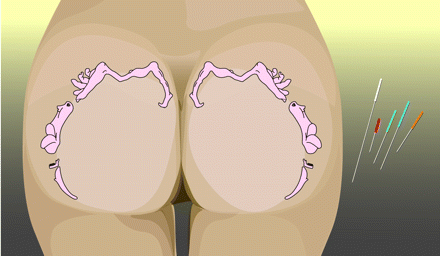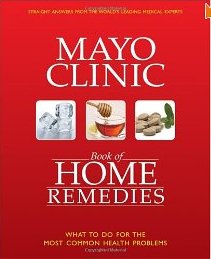April 5th, 2011 by admin in Opinion, Quackery Exposed
No Comments »

Everybody’s Doing It
One argument that often comes up when skeptics and proponents of so-called complementary and alternative medicine (CAM) debate is the question of the popularity of various CAM practices. Advocates of CAM often claim these practices are widely used and growing rapidly in popularity. Obviously, CAM proponents have an interest in characterizing their practices as widely accepted and utilized. Even though the popularity of an idea is not a reliable indication of whether or not it is true, most people are inclined to accept that if a lot of people believe in something there must be at least some truth to it. The evidence against this idea is overwhelming, but it is a deeply intuitive, intransigent notion that can only rarely be dislodged.
It might therefore be useful to get some idea of whether or not the claims of great popularity for CAM treatments are true. If they are not, fruitless debates about the probative value of such popularity could potentially be avoided, and it might be possible to diminish the allure associated with the belief that “everybody’s doing it.” Read more »
*This blog post was originally published at Science-Based Medicine*
December 23rd, 2010 by BenKavoussi in Opinion, Quackery Exposed
No Comments »

In November 2010, the California Department of Consumer Affairs (DCA) finally decided to act responsibly and forbid the prevalent practice of Chinese bloodletting by licensed acupuncturists. The practice became a concern for the DCA when allegations of unsanitary bloodletting at a California (CA) acupuncture school surfaced.
The incident allegedly occurred during a “doctoral” course for licensed practitioners. The instructor was reportedly demonstrating advanced needling and bloodletting techniques. During the process, he took an arrow-like lancing instrument that is called a “three-edged needle” (三棱针), sharpened it with sandpaper, cleaned it with alcohol, and then asked a student-volunteer to roll a towel around his neck. The instructor then cleaned the student’s temporal region with alcohol, and punctured a superficial blood vessel with the arrow-like instrument. The student then held his head over the garbage can, gushing blood for awhile. Read more »
*This blog post was originally published at Science-Based Medicine*
December 16th, 2010 by Harriet Hall, M.D. in Better Health Network, Humor, Medical Art, Opinion, Research
No Comments »

In 1996, Alan Sokal got a bogus paper published in the journal Social Text. It was a parody full of meaningless statements in the jargon of postmodern philosophy and cultural studies. The editors couldn’t tell the difference between Sokal’s nonsense and the usual articles they publish.
Now a British professor of medical education, Dr. John McLachlan, has perpetrated a similar hoax on supporters of so-called “integrative” medicine. He reports his prank in an article in the British Medical Journal (BMJ).

After receiving an invitation to submit papers to an International Conference on Integrative Medicine, he invented a ridiculous story about a new form of reflexology and acupuncture with points represented by a homunculus map on the buttocks. He claimed to have done studies showing that
responses are stronger and of more therapeutic value than those of auricular or conventional reflexology. In some cases, the map can be used for diagnostic purposes.
The organizers asked him to submit an abstract. He did. In the abstract he said he would present only case histories, testimonies, and positive outcomes, since his methods did not lend themselves to randomized controlled trials; and he suggested that his “novel paradigm” might lead to automatic rejection by closed minds. Read more »
*This blog post was originally published at Science-Based Medicine*
December 9th, 2010 by Mark Crislip, M.D. in Better Health Network, Humor, Opinion, Research, True Stories
No Comments »

The worst part of flying is the takeoff and landing. Not that I am nervous about those parts of the trip, it is that I am all electronic. Once I have to turn off my electronic devices, all I am left with is my own thoughts or what is in the seat pocket in front of me.
Since there is nothing to be gained from quiet introspection, I am stuck with either the in-flight magazine or SkyMall. I usually choose the latter. SkyMall, for those of you who do not fly, is a collection of catalogs bound in one volume. I have occasionally purchased products found in SkyMall and thumb through it with mild interest.
This time one product caught my eye, the Aculife home acupuncture/acupressure device. I had never noticed the “health”-related products in SkyMall before, usually looking for electronic gadgets that I really do not need. I was curious. How many other products besides Aculife are in the catalogue? According to the interwebs, about 100,000,000 Americans fly every year and well over half a billion people world wide. A lot of people can potentially look at SkyMall, including the occasional skeptic.
I have written about the many styles of acupuncture in the past: Hand and foot and tongue and ear and head and Chinese and Japanese. So many meridians and acupuncture points, how does the body find room for it all? Aculife makes it all simple. It’s all gauche, er, I mean in the left hand.
According to makers of Aculife, you can now “help strengthen your health with the latest ancient technology.” Of course I can, and for $199.95 I had better be able to. Read more »
*This blog post was originally published at Science-Based Medicine*
October 7th, 2010 by Harriet Hall, M.D. in Better Health Network, Book Reviews, Health Tips, Opinion
No Comments »

 I write a lot of critical articles. It’s nice to be able to write a positive one for a change. I received a prepublication proof of The Mayo Clinic Book of Home Remedies: What to Do for the Most Common Health Problems. It is due to be released on October 26 and can be pre-ordered from Amazon.com. Since “quackademic” medicine is infiltrating our best institutions and organizations, I wasn’t sure I could trust even the prestigious Mayo Clinic. I was expecting some questionable recommendations for complementary and alternative medicine (CAM) treatments, but I found nothing in the book that I could seriously object to.
I write a lot of critical articles. It’s nice to be able to write a positive one for a change. I received a prepublication proof of The Mayo Clinic Book of Home Remedies: What to Do for the Most Common Health Problems. It is due to be released on October 26 and can be pre-ordered from Amazon.com. Since “quackademic” medicine is infiltrating our best institutions and organizations, I wasn’t sure I could trust even the prestigious Mayo Clinic. I was expecting some questionable recommendations for complementary and alternative medicine (CAM) treatments, but I found nothing in the book that I could seriously object to.
It is organized alphabetically, starting with acne and airplane ear and progressing through bedbugs, boils and bronchitis, dandruff, depression and diabetes to warts, wrinkles and wrist pain. Each entry consists of (1) a description of the problem and its symptoms, (2) treatments you can try at home, and (3) when to seek professional medical help. It concludes with a short section on emergency medicine that covers anaphylaxis, bleeding, burns, CPR, choking, fracture, heart attack, poisoning, seizure, shock and stroke.
Nowhere does it mention acupuncture, chiropractic, energy medicine, or homeopathy. It gives good, clear guidance about when a health problem should not be treated with home remedies. Its recommendations about diet and exercise are solid. It doesn’t recommend anything that can’t be supported by published studies and common sense. When it recommends herbal remedies and dietary supplements, it is cautious about what it claims. For instance, glucosamine and chondroitin are listed for osteoarthritis, but they point out that further study is required and they say “because the supplements may help and appear to be safe, it may not hurt to give them a try.” Not exactly a strong recommendation. Read more »
*This blog post was originally published at Science-Based Medicine*













